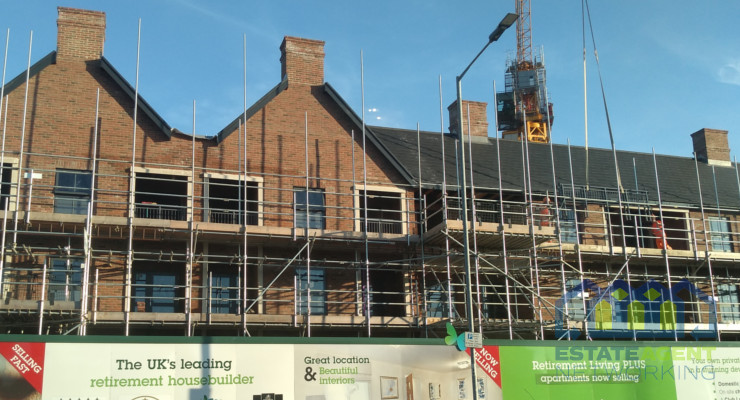From Fixer-Upper to Profitable Asset: Strategic Renovations for Landlords
Did you buy a fixer-upper? Or maybe you inherited one. Either way, you’re standing in a place with peeling linoleum, a questionable smell, and wallpaper that could file for social security. The big question: Do you patch things up, go full HGTV, or just torch it for the insurance (don’t do that)?
First, take a breath. Then take stock. Not every renovation adds value, and some can quietly drain your budget without doing much for your bottom line. Let’s talk strategy.
Renovate with ROI in Mind
When it comes to renovating a fixer-upper, you must be clear that you won’t be creating your dream home. You will be creating a space that renters will pay good money for. That means balancing function, style, and budget (emphasis on budget!).
According to the National Association of Realtors, updated kitchens and bathrooms are the most appealing to renters and buyers alike. But that doesn’t mean marble counters and a rainfall shower. Sometimes, it’s as simple as swapping old hardware, replacing grimy caulk, or painting cabinets instead of ripping them out.
In fact, Zillow found that minor kitchen remodels can return 81% of their cost. Not bad for a few weekends of elbow grease and a few gallons of semi-gloss.
Cosmetic Fixes That Actually Work
Paint is your best friend. Neutral tones. Clean finishes. It’s amazing what a fresh coat can do, especially when you’re covering up “vintage mustard” walls.
Flooring is another area where perception changes fast. Replace old carpets with durable vinyl plank or laminate. It’s clean, modern-looking, and easy to maintain (a win for both you and your future tenants).
Lighting also pulls more weight than you’d expect. Swap out yellowed fixtures for something clean and contemporary. Think warm, not dim. Mood lighting is for restaurants, not rental showings.
Don’t Overthink the Kitchen (Seriously)
If it’s functional, you don’t need a chef’s kitchen. Renters want clean surfaces and appliances that don’t require a user manual from 1998. Stainless steel is nice. But reliable and clean? Even better.
If you must splurge somewhere, make it on the things people touch every day: faucets, handles, drawer pulls. Those small details give a “this place is taken care of” vibe.
Bathrooms: Keep It Simple, Keep It Clean
No one wants to rent a bathroom that looks like it might still harbor a mildew colony from 2006. Reglazing a tub can work wonders. New grout. A fresh vanity. Done.
Walk-in showers are trendy, yes, but tubs are practical, especially for families with young kids. So, maybe don’t rip yours out just yet.
Function First, Always
This is where the unsexy stuff matters: plumbing, HVAC, roof condition, insulation. If your rental has character but no hot water, it’s not going to rent (or at least not to anyone who pays on time).
Do a full walkthrough and inspect the guts of the place. If you’re unsure, hire a property manager or contractor to give you a reality check. They’ll tell you what tenants will complain about first , and trust me, they will complain.
Curb Appeal: Yes, It Matters
First impressions are everything. Trim the hedges. Paint the door. Replace the rusty mailbox. You don’t need a garden that rivals Versailles, just a place that doesn’t scream “abandoned horror film.”
In fact, according to Remodeling Magazine’s Cost vs. Value report, garage door replacements and manufactured stone veneers have some of the highest ROI of any renovation. Who knew?
Know Your Market (Or Find Someone Who Does)
Here’s where local knowledge really matters. What works in Austin might flop in Akron. Do renters in your area expect in-unit laundry? Dedicated parking? A fenced yard?
A good property manager can help you figure out what upgrades matter most in your area. They’ve seen what attracts good tenants and what sits empty. And if you’re not local? Even more reason to find someone with boots on the ground.
And Don’t Forget Commercial Rentals
If your fixer-upper is zoned for mixed-use or commercial tenants, your renovation strategy shifts a bit. Think less cozy and more compliant. Commercial renters are looking for clean, functional spaces that align with their business needs, be it office-ready wiring, open layouts, or a professional-looking storefront.
Accessibility and updated HVAC systems matter more than trendy backsplashes. Renovating with commercial use in mind can open up higher rental income potential and longer lease terms, especially if you attract stable tenants like clinics, boutiques, or professional services.
Don’t Go It Alone (Unless You Love Stress and Permits)
Permits, inspections, contractor quotes that make you want to lie down for a minute, renovations can get overwhelming fast. Especially if you’re juggling a job or managing other properties.
Property managers can coordinate repairs, vet contractors, and make sure you’re not investing in upgrades that only make sense to you and your dog. They think like renters. Because they deal with renters. All. Day. Long.
Your ROI Isn’t Just Money
Okay, yes, cash flow matters. But so does peace of mind. A well-renovated property attracts better tenants. Fewer calls about broken things. Longer leases. Less churn.
Strategic upgrades now can mean fewer headaches later. And possibly, even a little pride when you hand over the keys.
And if all this feels like too much? You guessed it. A property manager (that’s number three) can step in to help you prioritize what matters and handle the chaos.
Final Thought
Not every fixer-upper is a money pit, and not every renovation is worth the receipt. The secret? Knowing which is which.
Think like a renter. Spend like an investor. Renovate like you’ve got a plan (or at least a good property manager on speed dial). That’s how you turn potential into profit without losing your sanity in the process.









